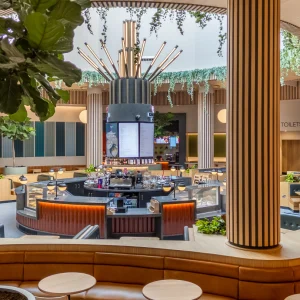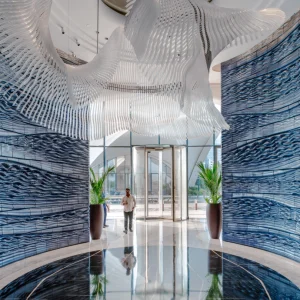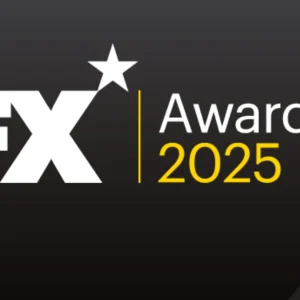Edited by Scarlett walker-hebborn
NO LONGER does the word ‘office’ conjure up images of soulless grey cubicles, flickering lighting and rows and rows of cramped desks.
The workplace is undergoing a shift. The increase in hybrid working has brought about a demand for more enjoyable office spaces. The workforce is demanding comfort in the workplace, and design has answered. The leading values in design for office spaces is now centred around adaptability and comfort, emphasising the well-being of workers and not just their productivity. This has been largely achieved through the use of modularity within every aspect of office design and also the incorporation of biophilic elements and spaces dedicated to relaxation. Historical influence, as always, is contributing to current trends, namely the post-war trend of having an open plan office; promoting collaboration and boosting a sense of community within the space.
Over the following pages, FX speaks with suppliers and designers within the industry to see what their views are on the everchanging landscape of office design.
What current or historical trend has inspired you personally in terms of office design?
We take more than just one single trend into consideration, because if you want to create an inclusive office, the one that truly supports your team and the tasks they perform, various aspects require careful attention. For sure, our primary goal is to ensure that the work environment caters to the needs of different teams, so space needs to be really flexible, featuring agile, modular furniture. This allows for easy rearrangement and maximum freedom to adapt work settings as needed. We also want to create great hospitality experience. In the post-pandemic era, employees expect an exquisite hospitality experience in the office to make it worth their while. We focus on creating common spaces that foster team spirit and make the office a welcoming place with a touch of biophilic elements.
Has office product design become more adventurous over the past 30 years. If so, in what way?
The adventure lies in the challenge, because, for sure, product design has become more challenging. Nowadays, we increasingly focus on the multifunctionality of our products, modularity and, above all, sustainability throughout the entire product life cycle. So we work with designers who have great industry knowledge and know manufacturing processes, to make sure we deliver great products, not only from the visual point of view, but also products that stand the test of time and adapt to the people’s needs. So, paradoxically, design that lasts is design that changes – adapts over time to the users’ needs.
 Bartosz Karasinski. Image Credit: www.Pawelsarota.Com
Bartosz Karasinski. Image Credit: www.Pawelsarota.Com
Has manufacturing and product design moved with the times?
Yes, it’s way more about designing and manufacturing for sustainability. This consideration begins right at the start or even before the design process. Our designs minimise material usage and optimise production to ensure there is little to no manufacturing waste. So, nowadays reducing the environmental impact is equally important to functionality and visual appeal of the products.
Do you commission freelance designers or recruit in-house designers?
We have designers in-house and commission freelancers.
Which exhibitions do you visit for inspiration/research?
We are visiting Mediolan, Stockholm Furniture Fair, Workspace Expo Paris, Orgatec, Workplace Meetings Cannes, Clerkenwell Design Week, PTE Amsterdam.
What have been your main drivers for your company’s most recent collection?
With passion and respect for the natural environment, we help people arrange offices and other public utility facilities, so that they best meet their needs in terms of health and comfort, increase their efficiency and enjoyment at work, and cater to individual ergonomic and aesthetic needs, so that they simply serve them in the best possible way.





